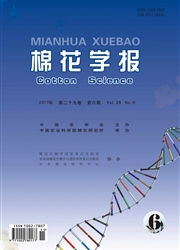

 中文摘要:
中文摘要:
以新疆棉花生产为例,运用条件价值法(CVM),通过对新疆棉花生产正外部性补贴的支付意愿调查,估算了棉花生产的生态环境、自然景观及社会保障等正外部性非市场价值;运用分解求和法,测算了新疆棉花生产过程中,棉田吸收CO2、棉田土壤固碳、棉花生产中物资燃料使用带来的碳排放等环境外部性的非市场价值。研究结果表明,新疆棉花生产的综合外部性表现为正,其外部性的非市场总价值高达110.8573×10^8元。若将此作为计算棉花补贴的依据,则每公顷棉花可补贴7589.85元;并提出将其作为棉花生产补贴标准,增加补贴项目,提高补贴额度.稳定棉花生产,保障棉花产业安全。
 英文摘要:
英文摘要:
Externality is a ubiquitous economic phenomenon in the department of agriculture. The cotton industry as a significant part in agriculture is no exception. Xinjiang Uygur Autonomous Region is the main cotton producing area in China, the positive externalities without redress have greatly influenced the stable development of its cotton production. Therefore, taking Xinjiang cotton producing as example, and using contingent valuation method (CVM), this article has estimated the non-market value of positive externalities of cotton production such as the ecological environment, the natural landscape, the social security, etc through investigating the willingness to pay (WTP) for the positive externality subsidy of cotton production. Using decomposed summation method non-market value of environmental externality brought by cotton fields absorbing CO2, cotton soil carbon se- questration and CO2 emission from the fuel supplies used in the process of cotton production in Xinjiang has been calculated. The result shows that the integrated externality of cotton production in Xinjiang is positive, and the total of non-market value of this integrated externality is ¥ 110.8573×10^8. If take this result as the basis for calculating cotton production subsidy, cotton pro- ducers should be subsidized Y7589.85 for every hectare. Finally, put forward some policy suggestions to guarantee stable cotton production and ensure cotton industry security: regarding the value (¥7589.85 per hectare) as the cotton production subsidy standards, increasing subsidy program, improving subsidy level,.
 同期刊论文项目
同期刊论文项目
 同项目期刊论文
同项目期刊论文
 期刊信息
期刊信息
